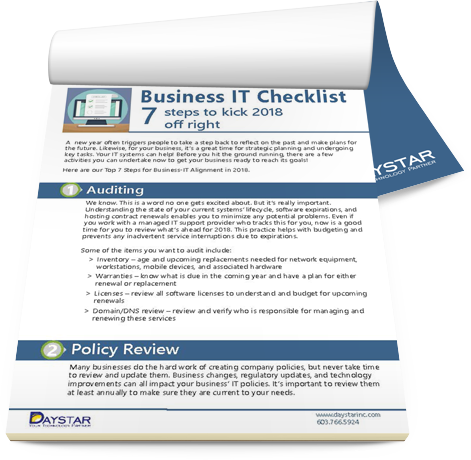Like a pop star diva, your IT systems are demanding. To get optimal, reliable performance, they require certain conditions. The temperature must be just so and the humidity must not frizz their coils!
Small businesses owners and administrators put on their IT hat and deploy servers, switches, and other network equipment to run their day-to-day operations. It’s quite enough for them to obtain the equipment and get it up and running. As long as it’s running, there’s no need to worry, right?
Wrong!
Ever sat on the couch with your laptop in your lap? What happens after 15 minutes or so? The laptop heats up…and so does your lap. Today’s servers and network equipment run greater loads for longer periods of time. We’re processing more data, using more robust applications, and running 24x7 – that’s a lot of heat!
How much does heat matter? It turns out…. a lot! Excessive heat can result in network outages, lost data, premature system failure, decreased efficiency and system availability, and significant cost. Some commons mistakes small businesses make when cooling their server closets include:
- Using AC systems designed for human use
- Turning off AC in off-peak hours
- Employing locked closets with no ventilation
- Improperly sealing server rooms
- Mixing people and equipment
- Allowing cold air to mix with hot exhaust air resulting in top-rack failures
Small businesses can help protect their IT investments from heat damage by employing some industry best practices.
1. Know your desired operating temperature for reliability and performance
Not the maximum operating temperature… the recommended and allowable operating temperature. According to the American Society of Heating, Refrigeration, and Air Conditioning Engineers, the range is as follows:
- Recommended: 68-77F, 20-25C
- Allowable: 59-90F, 15-32C
For every 18 degrees Fahrenheit over 70, electronics reliability is reduced by 50%. Strive for the recommended range as much as possible.
2. Avoid using AC systems designed for personal, human use. (#1 mistake)
Employ systems specifically designed for computer equipment with both temperature and humidity controls, as both will impact system reliability. Systems are available in built-in, wall-mount, ceiling-mount or standalone options. Also, be sure to have redundant AC.
3. Have a dedicated space.
Do not mix you network servers and equipment with personnel. This adds heat to the space and puts more strain on cooling the environment.
4. Seal off the space.
Ensure there are no open windows or doors, no missing ceiling or flooring tiles, and no cracks. Shut down vents leading to the personal AC unit. Keep the doors closed at all times. It is essential that you control the air as much as possible.
5. Ensure cold air gets to where it is needed.
Heat rises and cold air sinks. 80% of heat failures occur in the top of the rack. Arrange servers in rows so cold air comes in the front and is expelled out the back. Use blanking panels on the front of a server rack to cover spots where there are no servers to ensure cold air does not sink through the holes to hot air out back.
According to IDC, small business server closets face the highest level of cooling issues. You have invested a lot of money into your network systems. Make sure they are protected from the elements. Call in experts in IT cooling to help if needed. With space and thermal issues, it is a science to run a server room.
















